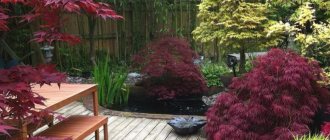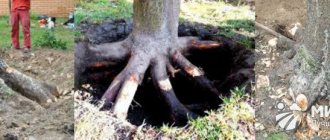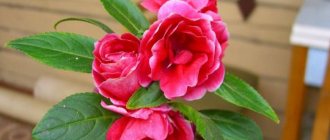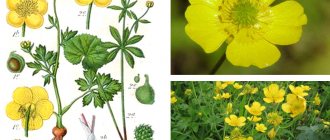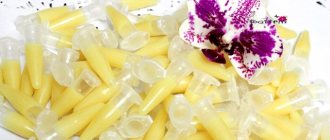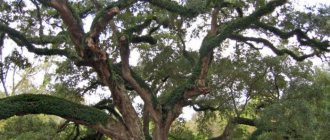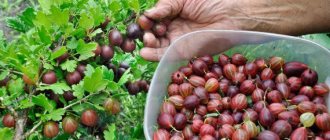Garden var: What is it for?
Garden varnish is an emergency remedy for damaged garden plants, which should be in the arsenal of every gardener. The substance disinfects a wound or cut of a plant and prevents the entry of fungal spores and pest larvae and prevents juice from leaking out. Use garden putty when pruning trees and shrubs, grafting and when healing damage.
Disinfection of plant wounds is a complex process that includes many biological nuances. Wax varnish is the main assistant, as it is prepared from natural and safe ingredients. The substance promotes rapid healing of plants. It copes with damage and cuts of any complexity and depth; even hollows will not harm the tree.
Purpose of the substance
Experienced gardeners are probably familiar with the concept of garden varnish, but for some this term will be new. Below we will describe in detail the main purpose of this composition, consider its advantages and disadvantages.
Garden varnish is a special putty that is used to protect fresh tree wounds from diseases, fungi, insects and parasites, as well as from leakage of plant sap. Among other things, this composition promotes rapid healing of cuts. It should be taken into account that varnish cannot be applied to damage immediately after it has formed. You need to wait until the cut dries slightly, and only then begin the procedure.
Wounds on trees can form for various reasons, for example, as a result of pruning any fragment of the plant, after grafting, due to damage by rodents or insect pests. If the tree is not protected from negative environmental factors in time, the cut may become infected. In addition, cracks may appear in the damaged area and the plant will begin to hurt.
There are several types of wounds on trees, they are classified as follows:
- sections obtained in the process of removing various plant fragments: branches, parts of the trunk;
- wounds resulting from circular damage to wood and bark;
- injuries resulting from partial damage to the outer and inner layers of wood;
- damage from tearing or tearing off branches;
- hollows are old injuries formed as a result of a long course of infectious wood diseases.
Garden var has its positive and negative qualities. The advantages of this composition include:
- ease of preparation and use;
- the ability to retain moisture well in the plant, preventing the cut from drying out and cracks;
- The frozen garden varnish does not smear or get dirty.
Among the negative properties are the following:
- after processing too large sections, the wood in the damaged area does not dry out quickly enough, which can sometimes lead to rotting of the wood in the area of the wound;
- working with garden varnish in the cold season is quite difficult, since it quickly thickens and is poorly applied to plants;
- If unnatural components are added to the composition of the product, then in the heat the varnish can melt, burning the bark of the tree.
To cause as little harm as possible to the tree, you should follow certain rules when pruning:
- The procedure is best carried out in mid-autumn or early spring;
- try to plan the process for a day when the weather is dry;
- When pruning, do not remove large thick branches; it is better to cut shoots no more than 2 cm thick - they recover faster;
- carry out the procedure only with well-sharpened instruments;
- When starting pruning, do not forget to strip off the old bark, and if the cut is not smooth enough, then trim its surface using a garden knife.
What is garden pitch made from?
Today in gardening stores you can easily find var and other disinfectants. However, the best and most effective is the one you prepare yourself. There is nothing complicated in the recipe; all the components are usually in the arsenal of every gardener.
The product recipe includes the following ingredients:
- beeswax or propolis;
- oils of vegetable or animal origin;
- alcohol;
- rosin;
- antifreeze;
- paraffin;
- drying oil
Beeswax is the main component of putty.
Garden ointment comes in two consistencies: liquid, melting when heated, and cold-resistant.
Garden var instructions for use
Using the healing brew is easy. There are several principles for its application. If you apply the ointment on time and according to the instructions, the plant will be protected from diseases and pests.
How to use garden varnish
The substance is used to disinfect wounds and damage during sanitary and formative pruning, to cover cracks and wounds, to prevent the leakage of juice or resin, to protect against diseases and pests. Var helps with damage to the bark by rodents.
After applying the ointment, it is easier for a shrub or tree to recover, to direct energy to the harvest, and not to recovery from a wound.
Features of the use of disinfectant ointment include the following points:
- Only healthy areas of wood can be treated. Remove dry, infected, damaged areas;
- Wounds and cuts should be smooth, there should be no growths or irregularities. Clean them with sandpaper;
- The wound is usually first washed with clean and warm water. Tools must also be clean.
- Treatment is carried out in spring or early summer. The damaged area must be dry. During the season, the layer can be updated.
- When filling cavities, it is necessary to treat them with copper sulfate or alcohol, as with all tools.
How to cover a tree with garden varnish
The medicinal ointment is applied according to certain rules:
- Remove damaged and diseased branches, clean the cuts with a sharp knife;
- Tools must be clean, preferably disinfected;
- The weather should be dry and cool;
- Wash the wounds with a solution of potassium permanganate or copper sulfate;
- Cover the cut only after drying;
- Warm the healing ointment a little: in the sun, in a water bath or in your hands;
- Apply the substance in a thin layer, evenly, without leaving empty spots;
- If a large area is damaged, apply an additional bandage or rag.
If necessary, repeat the procedure, as the layer may crack and allow moisture to pass through.
Grafting with garden varnish
Therapeutic putty is an excellent tool for covering wounds during grafting. After the procedure, the area is covered and wrapped with tape. The product is applied in a thin layer using a spatula or wooden stick. Grafting wax is suitable for the following grafting methods:
- budding;
- ablation;
- for the bark.
You can learn about these and other methods of grafting, as well as advice on grafting, from the article - When can apple trees be grafted.
An important point is that the varnish should not get between the scion and the rootstock, otherwise the fusion will occur slowly and crookedly. It may even cause rejection.
How to apply garden varnish
Apply a thin layer to the wound, hollow, area of peeled bark and other damage using a spatula or wooden stick. You can also do this with gloved hands, and large cuts with a brush or roller. Do not cover up immediately after damage. Let the cut dry. Pre-rinse the area with potassium permanganate or copper sulfate. If the weather is cool, warm the ointment in your hands or in a water bath.
Pros Cons
Let's start with the undeniable advantages that varnish for garden trees . Firstly, it is environmentally friendly. That is, if you purchased the “right” product, no dangerous chemicals. substances will not get under the bark of your plant. Secondly, excellent moisture-proofing properties.
This means that water will not get on the wound from the outside, and it will not evaporate too actively from the inside. It is very easy to handle, even if you have never performed such operations before, there should be no problems. Another plus is the cost. The drug will not ruin you, the product is included in the line of cheap ones.
And now about possible problems that may arise if you decide to use garden varnish . Waterproofing is, of course, good, but not always. For example, due to this property, the applied mass can cause rotting of plant tissues.
This product is not easy to work with in winter. Low temperatures are unfavorable conditions for its use. This is because the already applied putty thickens and becomes difficult to handle. Finally, pay close attention to the labels on the product packaging. Look for one that does not contain chemical additives. They can further aggravate the situation by “rewarding” the plant with a burn.
DIY garden varnish
As mentioned above, it is not necessary to buy medicinal ointment in the store. You can prepare it yourself. There are many recipes. There is room for experimentation. You can choose a suitable recipe that will correspond to the application situations and weather conditions. In addition, this option is more economical and budget-friendly than purchased.
Garden varnish at home based on paraffin
Garden pitch consists of:
- paraffin – 6 parts;
- rosin - 3 parts;
- mineral or vegetable oil - 2 parts.
Grind the rosin to a fine soap or flour, melt the paraffin. Mix the ingredients and put on the fire, bring to a boil. Pour oil into the mixture. Boil for half an hour. Pour the finished substance into a container and leave to cool.
You can make a disinfectant putty using paraffin with the same composition, but in different proportions. Add all components in equal parts.
Based on beeswax
The healing ointment consists of:
- rosin - half the composition;
- beeswax - 2 parts;
- interior fat - 1 part.
First, melt the wax and add the remaining ingredients to the boiling mass. Cook everything for half an hour, then pour into containers and let cool. When the mass reaches a warm temperature, knead it in your hands until smooth.
You can diversify recipes with beeswax if you add turpentine, unsalted fat, propolis, and lard to the composition. You can cool the mass in a bucket of cold water, wait until it curls and form it into a shape. Store the varnish in oiled paper. Use only in warm weather.
To prevent wasps and bees from flocking to the untreated area, cover it with a cloth. But do not use film, otherwise the substance will not dry.
Cold-resistant putty at home
Cold-resistant species are used to heal plants in the fall before frost. They are prepared using alcohol. The following few recipes are popular:
- Reshetnikov's ointment is prepared from fir resin, adding a little alcohol and yellow wax. The components are melted and mixed with alcohol. Cover the cuts with a brush.
- Gauga putty is made from pine resin, ordinary soda, gum and alcohol. First, melt the resin and mix with alcohol. Separately dilute gum and soda in water and add to the resin mixture. Apply with a brush.
- Raevsky's putty is prepared from tree resin, linseed oil and alcohol. Oil and alcohol are poured into the melted resin. The cooled mixture is poured into a metal container and left for storage.
How to replace garden varnish
However, not always and not all gardeners have the necessary ingredients for a garden brew. Therefore, there are different substitutes. They can be used at any time and on different types of plants. There are a lot of options for replacing the medicinal brew.
Garden pitch or oil paint - which is better?
If there are no ingredients for the medicinal brew, you can use oil paint. But not all types of paint are suitable for processing. You cannot use materials based on organic solvents, as well as nitro paints, alkyd enamels and PF paints. All these substances penetrate the living tissues of the tree and cause the death of living cells.
The best option is to paint with hemp or camelina oils, but mineral oils are also suitable.
The advantage of oil paint is that it is not washed off with water during rainfall.
Acrylic paint is also used as putty.
How to replace garden varnish when grafting
If drying oil paint is not available, there are other alternatives. You can cure the plant:
- A mixture of vegetable oil and melted wax. You can melt any wax, even an ordinary candle, and pour in a little oil. Cover the damage with liquid and warm mixture.
- Clay putty. Clay is mixed with mullein and resin. The mixture is mixed with water, kneaded and used to treat trees.
- Paraffin putty. It is made from rosin, paraffin and natural drying oil. All components are melted and used to cover wounds.
- Chatterbox with mullein. Mullein is diluted with water and clay until it becomes sour cream. First, wash the wound with copper sulfate, then apply putty.
- In a cellophane bag. If the wounds are not large, then you need to wash them with copper sulfate or potassium permanganate, then tie them with a bag. The plant will heal itself.
Plasticine instead of garden varnish
In some cases, a glue stick or ordinary children's plasticine is used. The substances are applied in a thin layer. They prevent moisture and bacteria from entering the wound.
Description, features and composition
During the times of the Soviet Union... We are sure that you have heard more than once how people talk with nostalgia about things or products that, during the Soviet era, were distinguished by amazing quality and taste. Gardeners also like to remember those times, who have not forgotten about the simple but very effective drugs available to everyone back then.
One of these remedies is garden var . Almost every gardener had it at hand. And reviews of this lineup were mostly good. That’s why this simple product still remains in demand.
Its task is to protect wood “wounds” from infections and other troubles. These could be various infections, the harmful effects of too frosty air, or too active evaporation of moisture.
What was the product like before, and has it changed now? To answer this question, you need to study the composition of the substance. In its classic form, it is a paste made from bee products and natural resin. In addition to these ingredients, the garden varnish may include:
- Any oil of exclusively natural origin. This component must have antiseptic properties. This includes flax and calendula extracts.
- Beeswax. This complex ingredient contains up to three hundred different components. These include ester substances, acids, and minerals. Together, all this works to accelerate tissue regeneration and healing.
- Another product produced by winged insects is propolis. This miracle remedy can overcome bacteria, viruses, and fungi.
- Rosin. Also resin, but only produced by coniferous trees.
- Alcohol. It is added to the composition to achieve stronger disinfection. Plus, it helps the substance to be more plastic even in cold weather.
When you apply this compound to damaged areas of wood, it should help repair the tissue. In what cases is this relevant?
- If you have performed scheduled pruning of branches
- Accidentally damaged the surface layer of the plant
- Hail, strong winds, frost, or the burning rays of the sun caused the formation of “open wounds”
- Pests can also cause damage; various rodents are especially dangerous in this regard. Insects often act as aggressors.
How to wash garden var off your hands
Experienced gardeners recommend working with garden varnish while wearing rubber gloves. But if you still get it on your hands, then you need to wash it off. You can remove the ointment from your hands using non-polar solvents, such as white spirit. Some people recommend washing it off with gasoline.
But do not use too concentrated liquids. Do not rub in different directions, as this increases the surface area of the stain. Work your hands from the edges to the center. Rinse in cool, not cold, but room temperature water. In hot water, fats polymerize.
